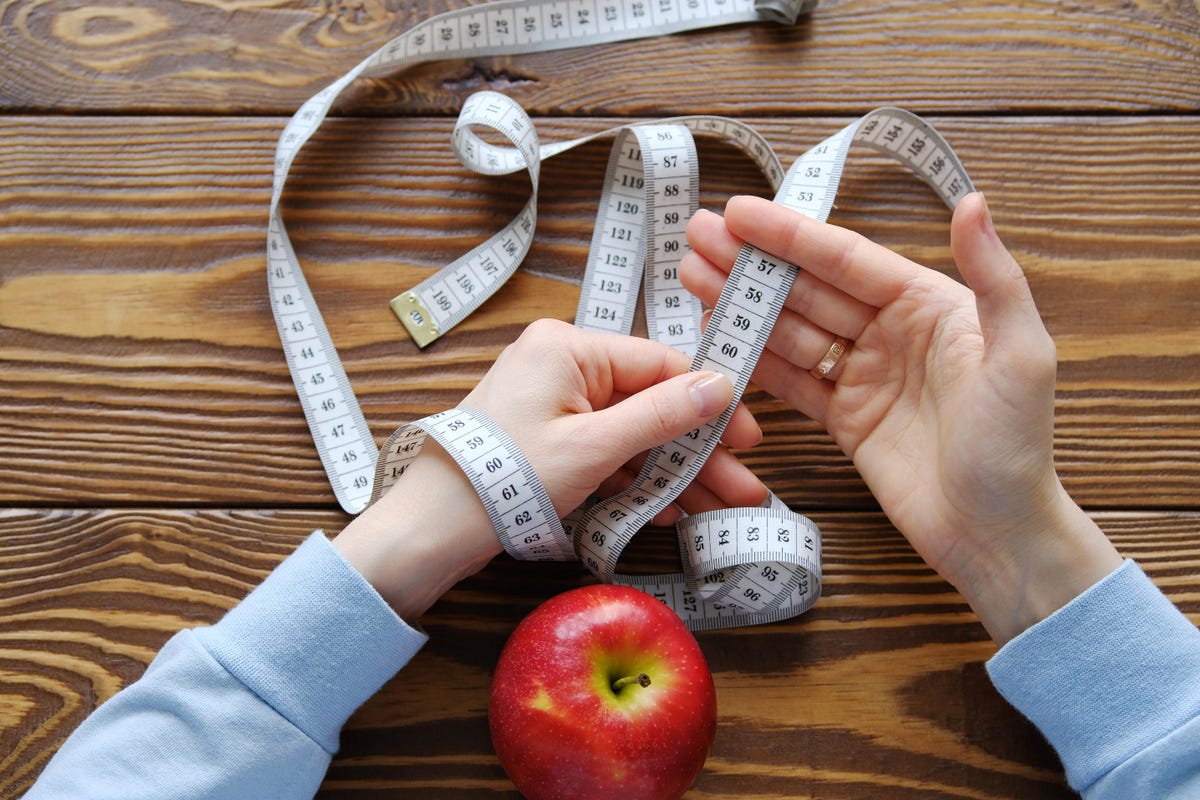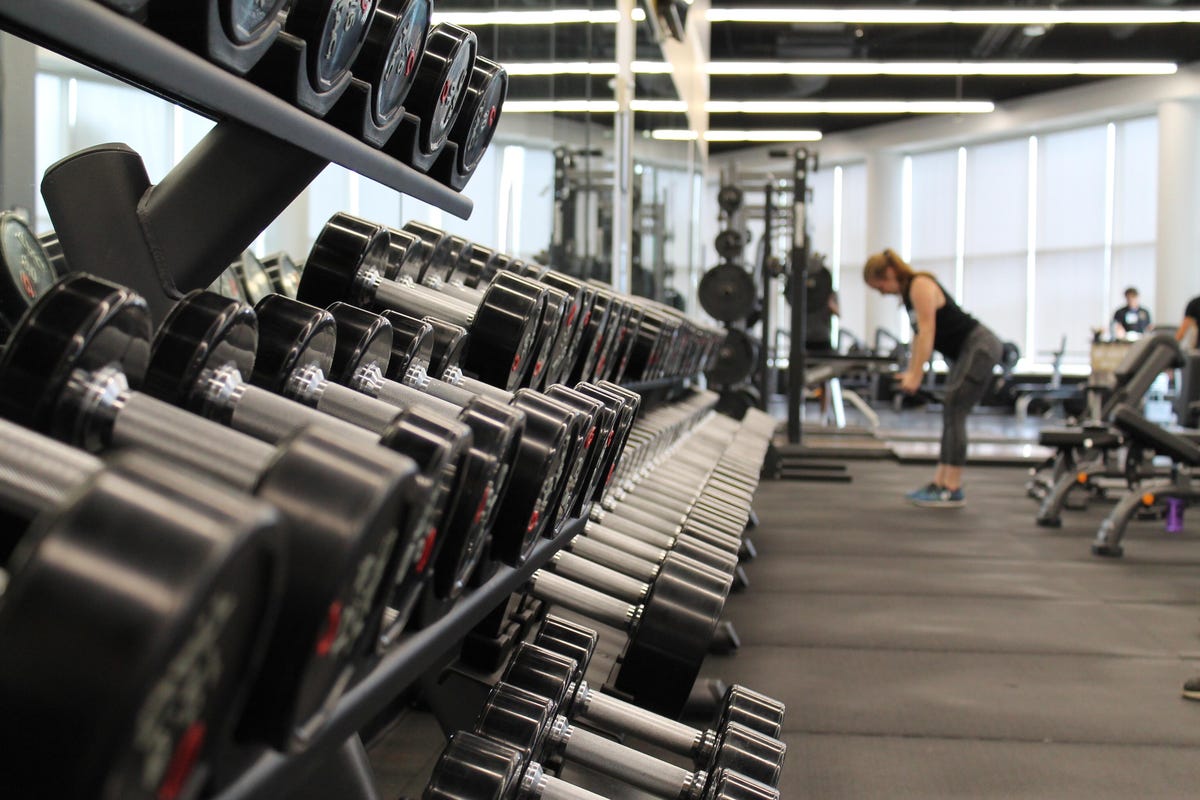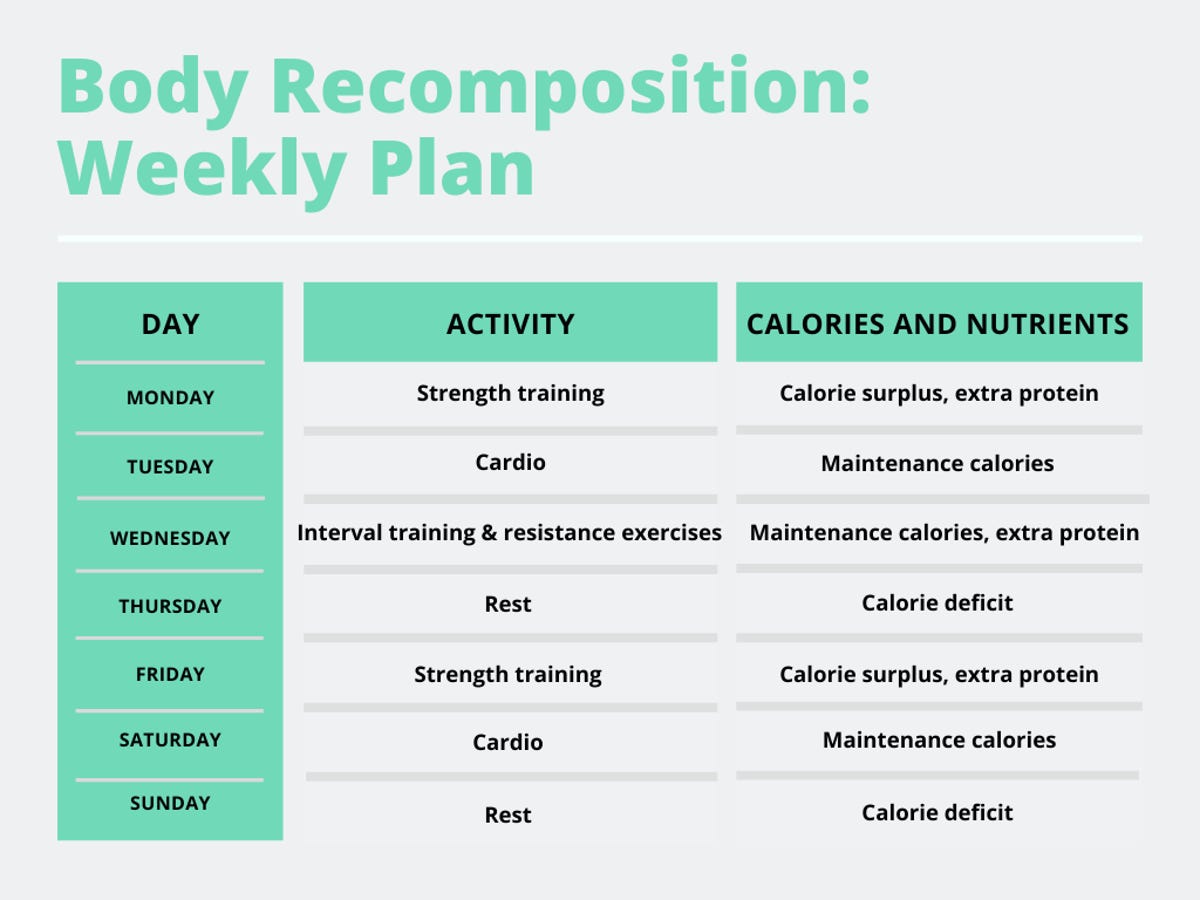Fitness is a complicated thing. But more often than not, you’ll find the basics center on losing weight or gaining muscle. Though you might be under the impression that you have to choose one or the other and focus on it, that’s not necessarily the case. You can lose weight and gain muscle at the same time by focusing on body recomposition. However, you’ll need to engage in a more carefully planned process than when you’re just losing weight.
Body recomposition may sound contradictory, because many people find it challenging to reduce body fat and build muscle at the same time. It makes sense that the process can be tough, since a caloric deficit aids in weight loss, but you need to consume more calories than you burn in order to build muscle. That’s exactly why body recomposition requires you to dial in your diet and training.
Here are some foolproof ways to approach body recomposition so you can reach your fitness goals. And don’t forget: Everyday activities can also add to movement and help with burning calories.

Body composition refers to your body fat percentage and lean mass percentage.
What is body composition?
Your body composition is the ratio of fat mass to lean mass in your body. Sometimes, body composition is used interchangeably with body fat percentage, but body fat percentage is just one part of your overall body composition.
Lean mass includes muscle, bones, ligaments, tendons, organs, other tissues and water — in other words, everything that’s not body fat. Depending on what method you use to measure your body composition, you may see water as its own percentage.
What about body recomposition?
Body recomposition refers to the process of changing your ratio of fat mass to lean mass — that is, losing body fat and gaining muscle mass. The goal of body recomposition is to lose fat and gain muscle simultaneously, unlike the traditional approach of “bulking and cutting” in which you intentionally put on a lot of weight first (muscle and fat) and then go through an intense calorie deficit to lose the fat and reveal the muscle underneath.

When your goal is body recomposition, ditch the scale and use a tape measure for a better idea of your progress.
Forget about weight loss
Body recomposition isn’t about weight loss; it’s about fat loss. On a body recomposition plan, you may maintain your current weight or even gain weight — remember hearing “muscle weighs more than fat”? This is semi-true. Muscle is denser than fat.
During body recomposition, what changes, instead of weight, is your physique. As you progress through body recomposition, you may notice changes in your body, such as an overall firmer look or that your clothes fit differently. You may even gain weight, but have a smaller physique, at the end of your body recomposition program.
For example, I weigh exactly the same now as I did before I started exercising and eating healthy. I wear smaller clothes, however, and my body has more muscle tone than it did before. I also feel much stronger than before I began a strength training program (a nonaesthetic benefit to body recomposition). So you can ditch the scale, because it doesn’t differentiate between fat loss and muscle loss, and weight loss isn’t the primary goal with body recomposition.
There’s one caveat to consider, though: If you want to lose a large amount of body fat and don’t intend to put on much muscle mass, you may lose weight in the long run.
Body recomposition is a long game
Because you’re trying to do two things at once — lose fat and gain muscle — you can’t treat a body recomposition plan like a fad diet. Healthy weight loss and healthy muscle gain both take a long time on their own: Put them together and you’re in it for the long haul. The slow, steady process of body recomposition offers sustainable results, though, so you’ll enjoy your new physique for as long as you maintain those habits.

Body recomposition is a fine balance between building muscle and losing fat.
How does body recomposition work?
Body recomposition truly comes down to your specific health and fitness goals. Unlike traditional methods of weight loss — such as very low-calorie diets or periods of really intense cardio exercise — there’s no real protocol for body recomposition.
There are basic guidelines to follow. To successfully change your body composition, you need:
How to lose fat
Fat loss ultimately comes down to your calorie maintenance. To lose fat, you must eat fewer calories than you burn. Cardiovascular exercise, or combined cardio and resistance exercise, alongside a healthy diet still stands as the best technique for fat loss — there’s just no way around the science. Losing fat in a safe, sustainable way also means having realistic goals and not depriving your body of the nutrients it needs — disordered eating habits are never worth the risk.

Building muscle requires resistance training.
How to build muscle
To build muscle, focus on two main factors: weight training and protein consumption. Strength training is essential to changing your body composition — your muscles won’t grow if you don’t challenge them.
Additionally, you can’t build muscle without being in a caloric surplus, so you must eat more calories than you burn to promote muscle growth. While all macronutrients are important, protein is especially important for building muscle. Without enough protein, your body will struggle to repair the muscle tissues that get broken down during weight training.
Plus, studies show that a high-protein diet can help with losing fat and gaining muscle at the same time. Research shows that, while in a calorie deficit, consuming more protein than you normally might can help preserve your lean body mass (a.k.a. muscle mass) than being in a calorie deficit without changing your protein intake.
In people who have already been following a strength training program, increasing protein intake and following a heavy weight-lifting routine leads to improvements in body composition.

Bodybuilders are known for their ability to achieve incredibly lean and muscular physiques. This obviously isn’t everyone’s goal, but it’s a good example of what’s possible with body recomposition.
Put it all together: Calorie cycling
It sounds confusing that you have to eat fewer calories than you burn to lose fat, but you have to eat more calories than you burn to build muscle. It’s actually pretty simple when you learn about the concept of calorie cycling: modifying your calorie and macronutrient intake to match your goal for the day.
The first thing you need to do is figure out your maintenance calories, or how many calories you burn on a day you don’t exercise. You can see a certified personal trainer, dietitian or other health professional to find this number, or you can use an online calorie calculator. This one from Mayo Clinic uses the Mifflin-St. Jeor equation, which pros consider the gold standard.
On days that you do cardio exercise, you should consume enough calories to meet your maintenance number. Consuming maintenance calories on a cardio day ensures that you’re in a slight deficit to promote fat loss, but not in a deficit so large that your body starts using muscle tissue as fuel. We want the muscle!
On days that you do a strength training workout for 30 minutes or more, eat more calories than your maintenance number with a focus on protein. Depending on how much muscle you want to put on and how quickly you want to gain it, add 5% to 15% to your maintenance calories.
On days that you don’t work out at all, eat slightly less than your maintenance calories — decrease that number by 5% to 10%. This number is called your “rest day calories.”

A weekly plan to hit your body recomposition goals.
Think of it this way: Every day, you consume new calories and your body must decide what to do with those calories. Your body essentially has three basic choices: immediately burn the calories for fuel, use them to repair and build muscle tissue or store them as fat.
If you’re looking for a body transformation, you don’t want to store calories as fat. But you do want your body to use new calories to repair the muscles you broke down during weight-lifting workouts.
So, you’ll eat more calories (and protein) on weight-training days so your body uses those calories and nutrients to fuel muscle repair, and thus muscle growth. And you’ll eat fewer calories on cardio days and days that you don’t work out because you want your body to use the fat it already has as fuel — not to use new calories as fuel.
By combining these two tactics, you can successfully achieve body recomposition.




















+ There are no comments
Add yours